In our previous blog post we had discussed about What is Custom Buttons In Salesforce. In these blog post we discuss about What is Custom actions in Salesforce
Contents
- 1 What is Custom Actions in Salesforce
- 1.1 Introduction to Custom Actions in Salesforce:-
- 1.2 What are Custom Actions?
- 1.3 Types of Custom Actions in Salesforce:-
- 1.4 Global Actions:-
- 1.5 Object-Specific Actions:-
- 1.6 How to create custom action in salesforce
- 1.7 How Custom Actions Enhance User Experience in Salesforce:-
- 1.8 Streamlining Workflows:-
- 1.9 Increasing User Adoption:-
- 1.10 Best Practices for Implementing Custom Actions in Salesforce:-
- 1.11 Common Challenges and Solutions in Using Custom Actions in Salesforce:-
- 1.12 Conclusion:-
- 1.13 FAQ:
What is Custom Actions in Salesforce
Introduction to Custom Actions in Salesforce:-
Custom actions in Salesforce play a pivotal role in enhancing user experience and streamlining workflows. Let’s delve deep into the world of custom actions to understand their significance.
What are Custom Actions?
- Definition and Explanation: Custom actions are powerful tools that allow users to interact with Salesforce data in unique ways.
- Purpose and Importance in Salesforce: They enable users to perform specific tasks, create records, or update information without navigating through multiple pages.
Types of Custom Actions in Salesforce:-
There are two main types of custom actions in Salesforce, each serving different purposes and functionalities.
Global Actions:-
- Definition and Use Cases: Global actions are accessible from anywhere in Salesforce, making them ideal for frequently used tasks.
- Implementation and Configuration in Salesforce: Setting up global actions involves defining the action, specifying fields, and assigning page layouts.
Object-Specific Actions:-
- Definition and Examples: Object-specific actions are tailored to a specific object, providing contextually relevant actions.
- How to Create and Customize Object-Specific Actions: Users can customize object-specific actions by defining the action type, layout, and fields.
How to create custom action in salesforce
- Log in to Salesforce: Log in to your Salesforce account with appropriate permissions to create custom actions.
- Navigate to Object Manager: Click on the Object Manager tab in the setup menu. This will allow you to choose the object for which you want to create a custom action.
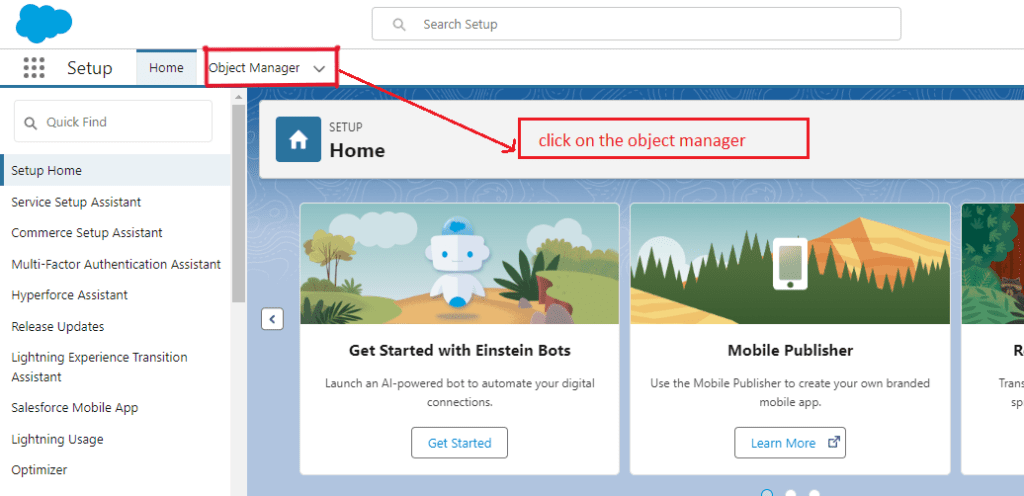
- Choose Object: Select the object for which you want to create a custom action from the list of objects available in the Object Manager. For example, if you want to create a custom action for the Account object, click on “Account”.
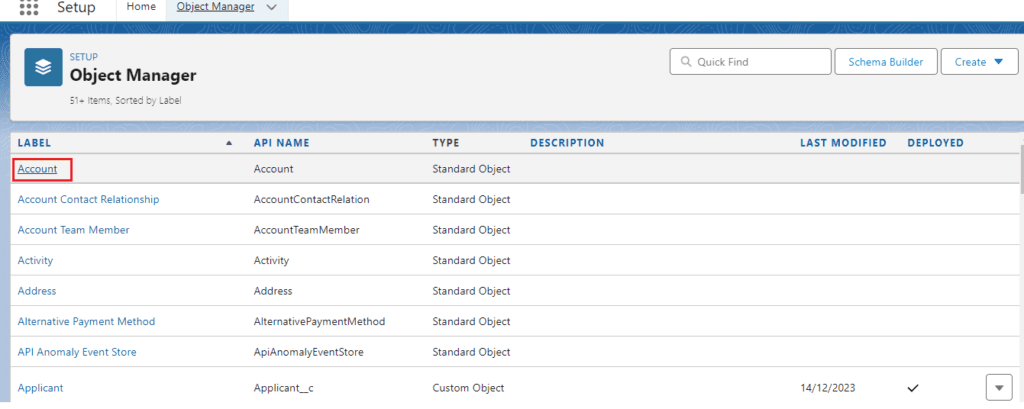
- Go to Buttons, Links, and Actions: In the left sidebar of the Object Manager page, you will see a section called “Buttons, Links, and Actions”. Click on it to expand the options.
- Click New Action: Once you’re in the “Buttons, Links, and Actions” section, click the “New Action” button. This will start the process of creating a new custom action.

- Choose Action Type: Salesforce offers different types of actions like Create a Record, Update a Record, Log a Call, etc. Choose the appropriate action type for your use case. For example, if you want to create a custom action to create a new related record, choose “Create a Record”.
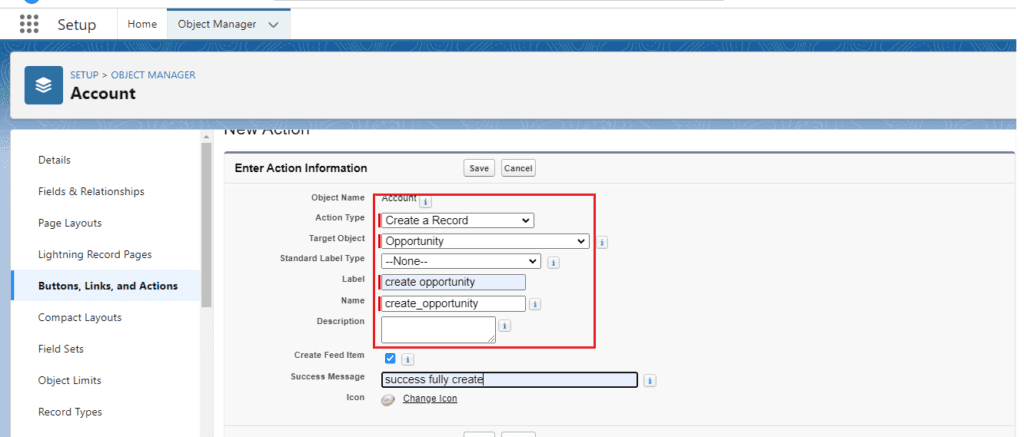
- Configure Action: Fill in the details for your custom action. This includes the label (name that appears on the button), name (API name), description (optional), and other settings specific to the action type you selected.
- Define Action Layout: After configuring the action details, you’ll be prompted to define the action layout. This includes selecting the fields you want to display on the action layout and arranging them according to your preference.
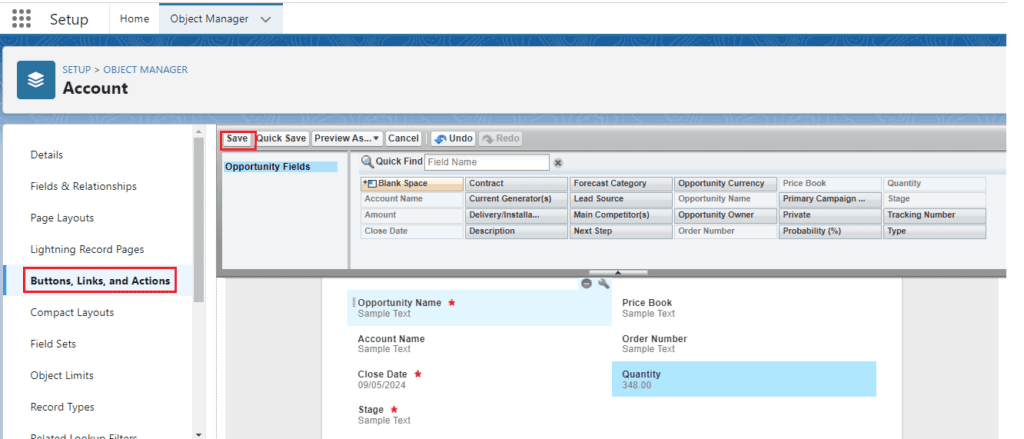
- Save the Action: Once you’ve configured the action and defined the layout, click “Save” to save your custom action.
- Add Action to Page Layout: After saving the action, you need to add it to the page layout of the object so users can see and use it. Go to the page layout editor for the object, drag the newly created action from the “Mobile & Lightning Actions” section to the “Salesforce Mobile and Lightning Experience Actions” section, and save the layout.
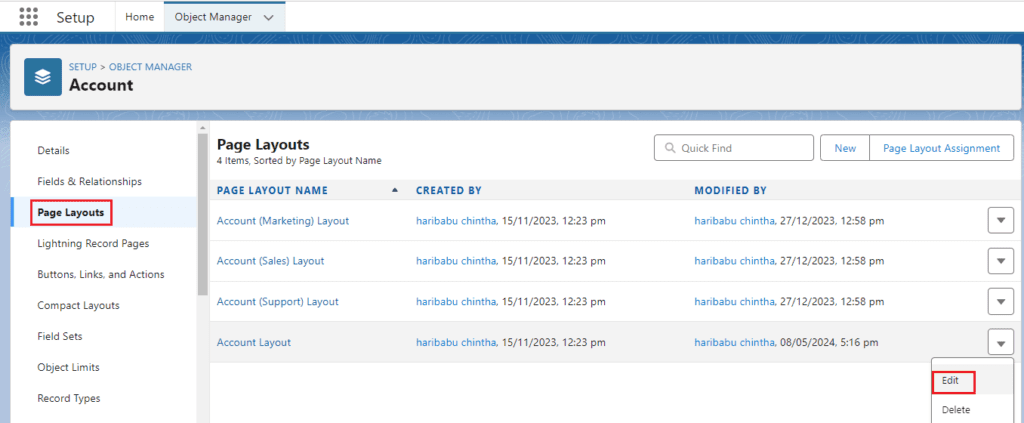
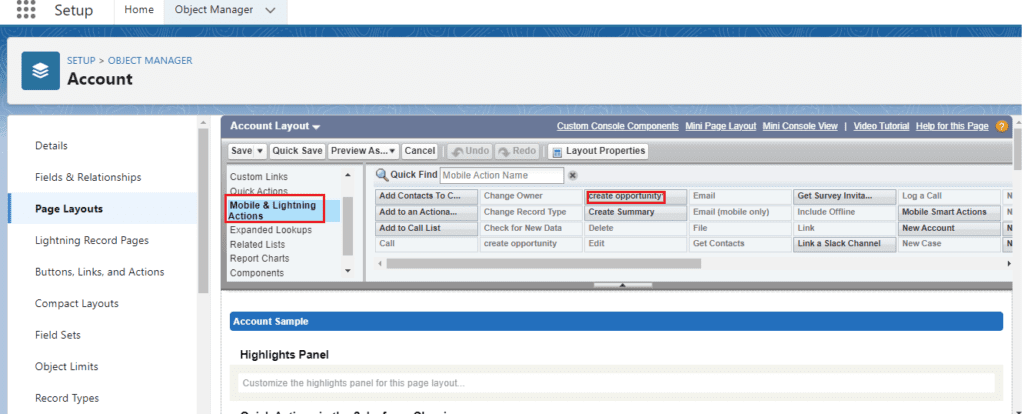
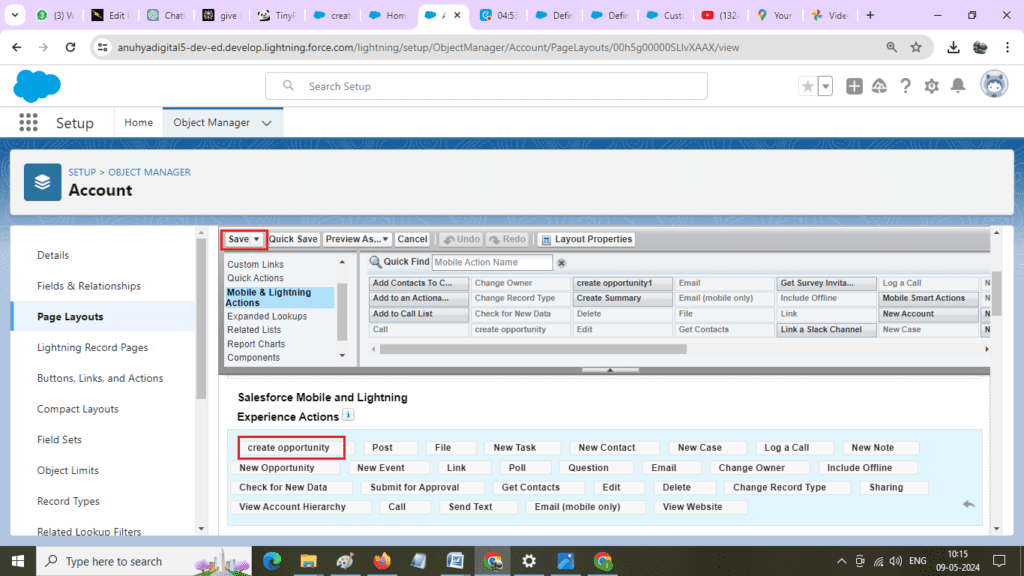
- Test the Action: Once added to the page layout, you can test the custom action by navigating to a record of the object for which you created the action and looking for the action button. Click on the button to see if the action performs as expected.
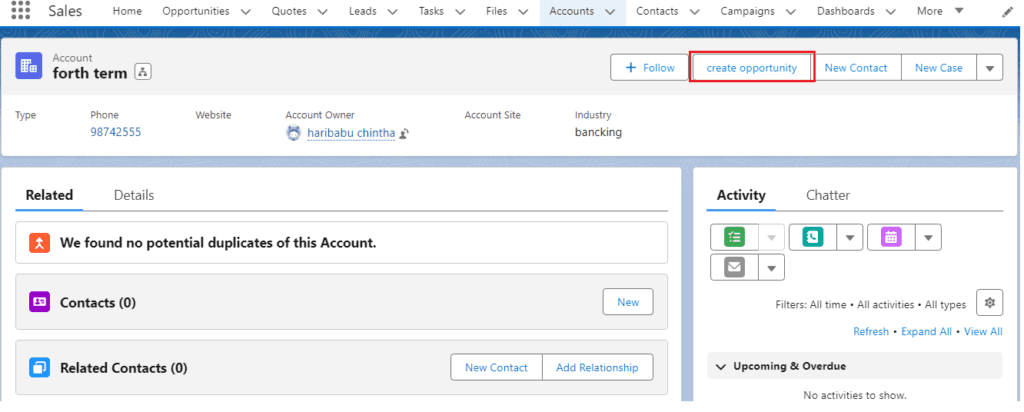
you want know more about this topic is What is Custom Actions in Salesforce click here
How Custom Actions Enhance User Experience in Salesforce:-
Custom actions significantly impact user experience by simplifying processes and boosting productivity.
Streamlining Workflows:-
- Improving Efficiency and Productivity: Custom actions reduce the time and effort required to accomplish tasks, leading to increased efficiency.
- Simplifying Complex Processes: They break down complex processes into simple, user-friendly steps, enhancing user experience.
Increasing User Adoption:-
- Enhancing User Engagement: Custom actions make tasks more engaging and interactive, increasing user engagement.
- Improving User Satisfaction: By providing a seamless user experience, custom actions boost user satisfaction and adoption rates.
Best Practices for Implementing Custom Actions in Salesforce:-
Successful implementation of custom actions requires a strategic approach to align them with business objectives and user needs.
Defining Clear Objectives:-
- Setting Goals and KPIs: Define clear objectives and key performance indicators to measure the effectiveness of custom actions.
- Aligning Custom Actions with Business Objectives: Ensure that custom actions align with the overall business strategy and goals.
User-Centric Design:-
- Understanding User Needs and Preferences: Conduct user research to understand the preferences and requirements of your audience.
- Creating Intuitive and User-Friendly Custom Actions: Design custom actions that are intuitive, user-friendly, and easy to navigate.
Common Challenges and Solutions in Using Custom Actions in Salesforce:-
While custom actions offer numerous benefits, they also come with challenges that need to be addressed for successful implementation.
Integration Issues:-
- Ensuring Seamless Integration with Existing Systems: To avoid disruptions, ensure that custom actions seamlessly integrate with existing systems.
- Troubleshooting Common Integration Challenges: Address integration issues promptly by troubleshooting common challenges that may arise.
Compliance and Security Concerns:-
- Ensuring Data Security and Compliance with Regulations: Protect sensitive data by implementing robust security measures and complying with regulations.
- Implementing Best Practices for Secure Custom Actions: Follow security best practices to mitigate risks and ensure data integrity.
Conclusion:-
Custom actions are a game-changer in Salesforce, offering endless possibilities for enhancing user experience and driving success. By implementing best practices and addressing challenges proactively, businesses can leverage custom actions to unlock their full potential in Salesforce.
FAQ:
- Can custom actions be used across different Salesforce editions?
Yes, custom actions in Salesforce, such as custom buttons or links, can generally be used across different Salesforce editions, provided that the actions do not rely on features specific to higher editions. However, limitations may apply depending on edition-specific features and restrictions.
- How can I measure the effectiveness of custom actions in Salesforce?
To measure the effectiveness of custom actions in Salesforce, you can track metrics such as user adoption rates and engagement levels with the custom actions. Additionally, analyzing the impact of these actions on key business processes or outcomes can provide insights into their effectiveness
- Are there any limitations to what can be achieved using custom actions in Salesforce?
Custom actions in Salesforce, while versatile, do have limitations. These can include constraints on integration capabilities and the complexity of logic that can be executed within them.
Remember, custom actions in Salesforce are not just tools; they are enablers of seamless workflows, user-centric design, and enhanced user experience. Embrace them wisely to propel your Salesforce journey to new heights.
In our next blog post we will discuss about What is Custom Links in Salesforce
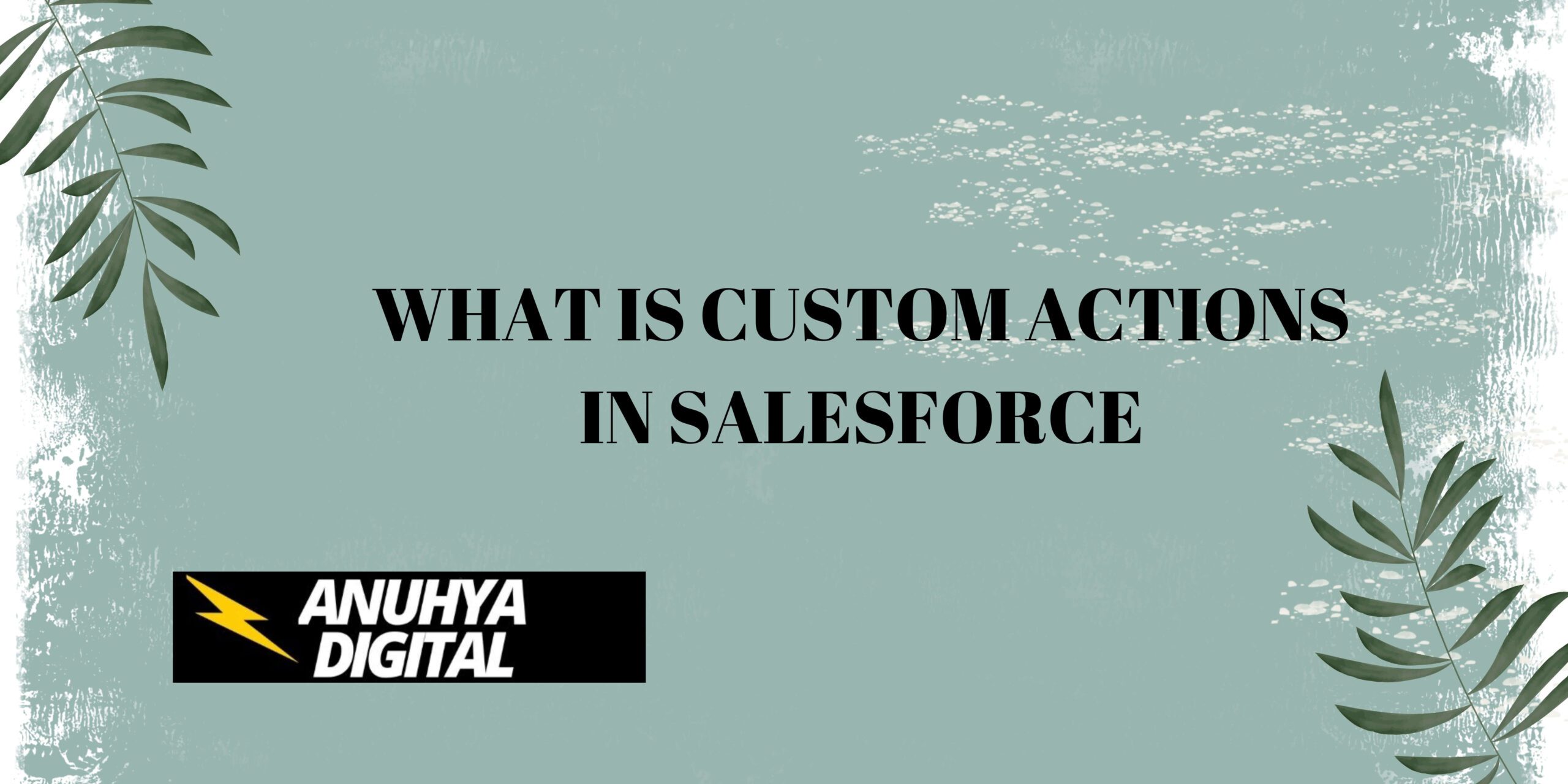
3 thoughts on “What is Custom Actions in Salesforce”